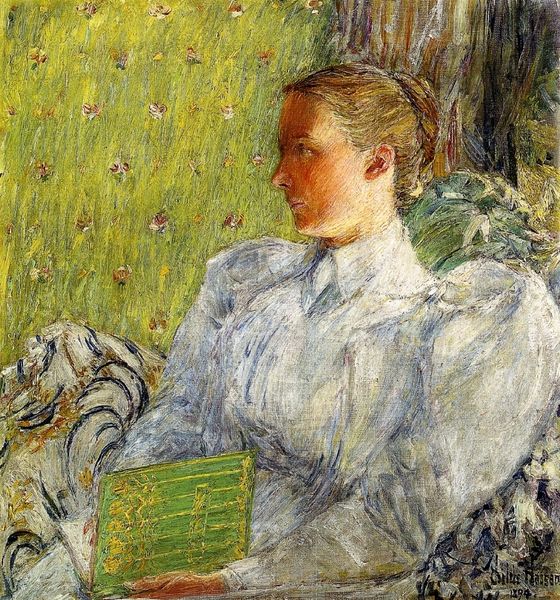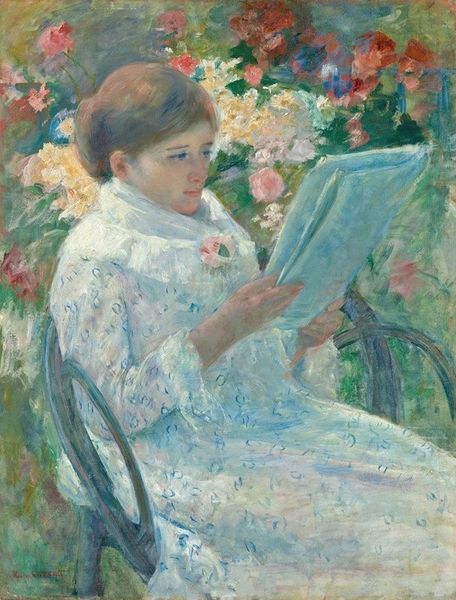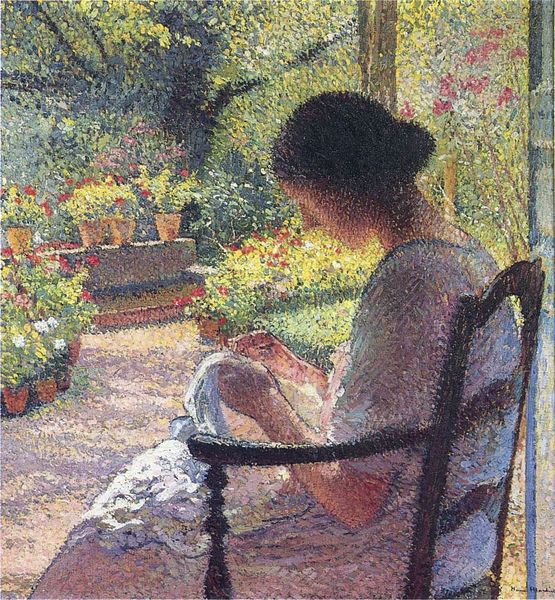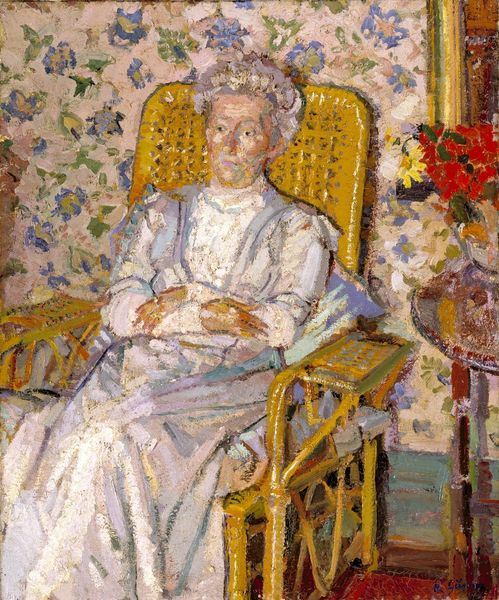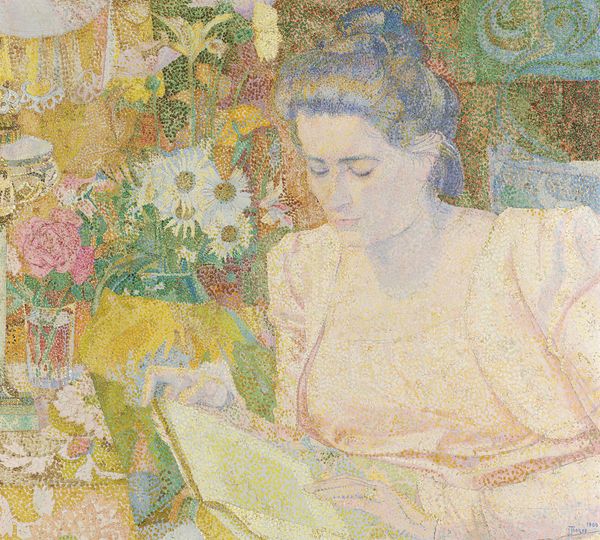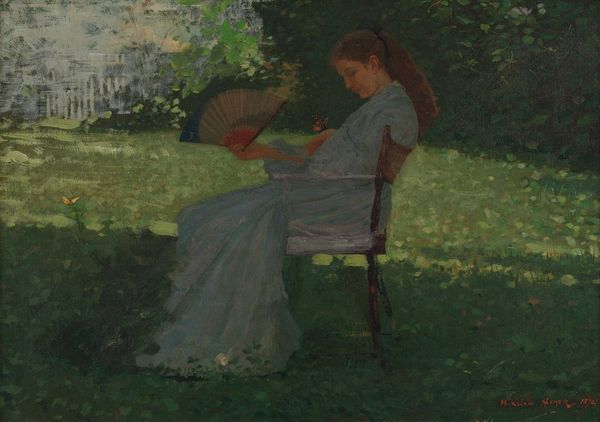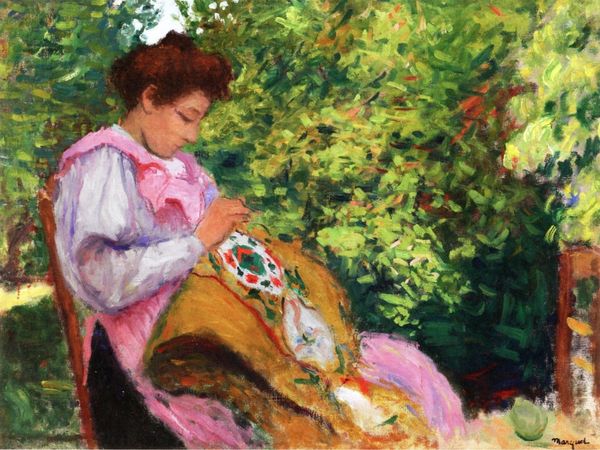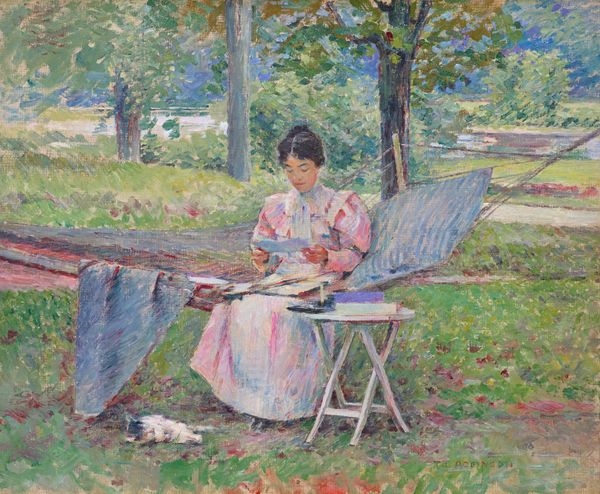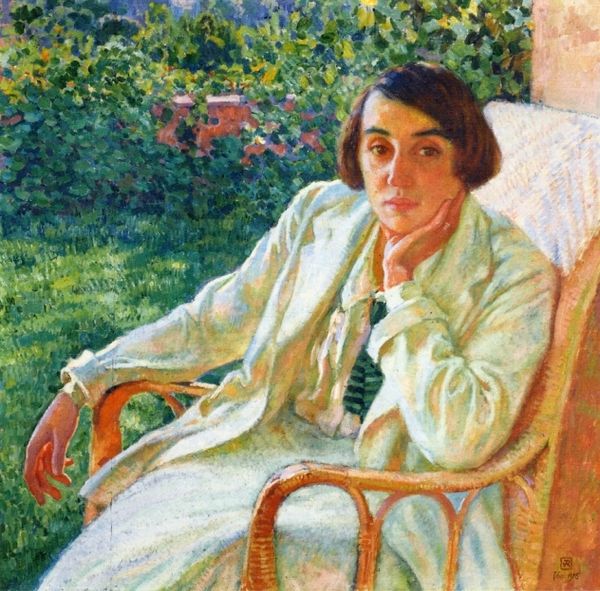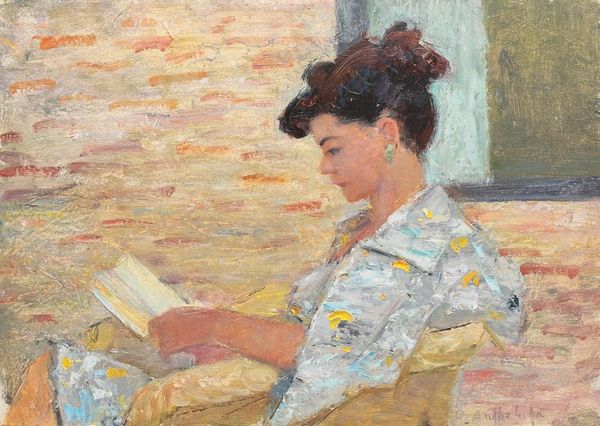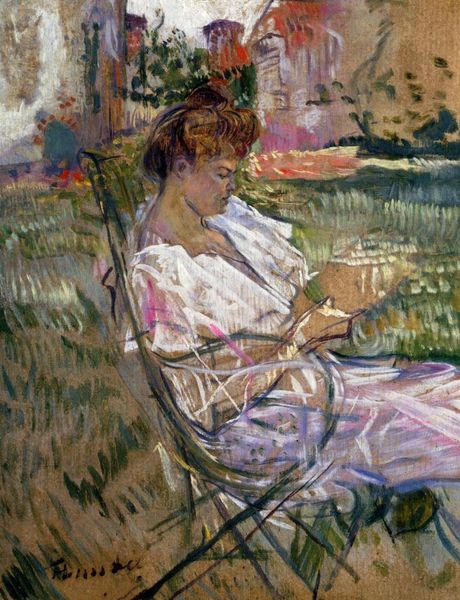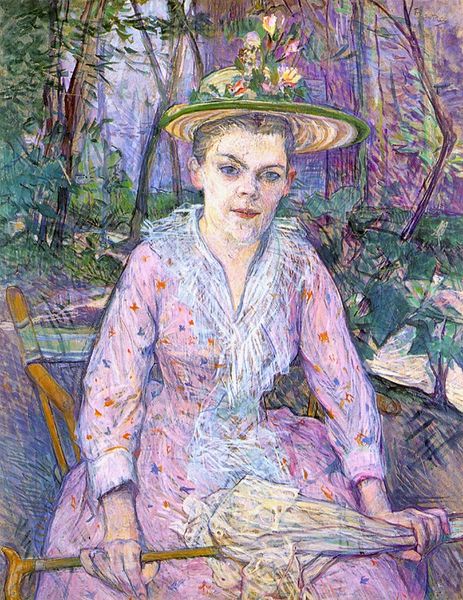
Dimensions: 68 x 99 cm
Copyright: Public domain
Curator: Here we have Kazimir Malevich’s “Portrait of a Member of the Artist's Family,” completed in 1906 using oil paint, displaying clear plein-air and impressionist influences. Editor: It has an arresting serenity about it. The light dapples everything, blurring the background and softening the sitter’s features. It’s as if time is momentarily suspended in this idyllic garden scene. Curator: Note how the seemingly casual composition is balanced through the use of light, color, and repetition of motifs. For instance, the shapes of flowers, patterns of branches, or the decorative embroidery of her apron recur across the canvas. What do you make of such elements? Editor: It invites one to consider domesticity as a form of resistance, maybe. Considering the patriarchal structures in art history and beyond, this portrait, seemingly of an everyday moment, situates a female figure centrally, if anonymously, in a narrative brimming with natural beauty. Curator: Precisely. Beyond the immediate subject, what interests me are the deeper symbolic elements. Gardens themselves have resonated for centuries. As enclosed, cultivated spaces, they have become potent symbols for both paradise and female enclosure. I note a fascinating dialectic between order and untamed nature, mirrored also in the subject's own serene yet firm countenance. Editor: I would push further to argue that by creating this tableau within a "private sphere", Malevich tacitly comments on societal expectations and restrictions imposed on women in that historical moment. Also, I would posit that there may have been a familial, or political alignment reflected here—the artist's deliberate visual choice to represent his family member speaks volumes to their possible convictions, their place, or position in their shared life. Curator: It begs the question whether the “member of the family” is deliberately made anonymous or is there a loss of personal identity to societal role. I wonder too whether we should consider how the broader, vibrant natural landscape presses against her domestic interiority? Editor: A fair assessment. It's compelling to see art offer quiet defiance to the norms of its time, all contained in what seems, on first glance, like a placid portrait of domestic life. Curator: Indeed, and on the surface, one sees such a scene as harmonious, even joyful. On further viewing, it poses probing questions on society, family and personhood. Editor: It underscores how artworks can exist within a web of cultural forces. A good point to remember as we journey through more art today.
Comments
No comments
Be the first to comment and join the conversation on the ultimate creative platform.
